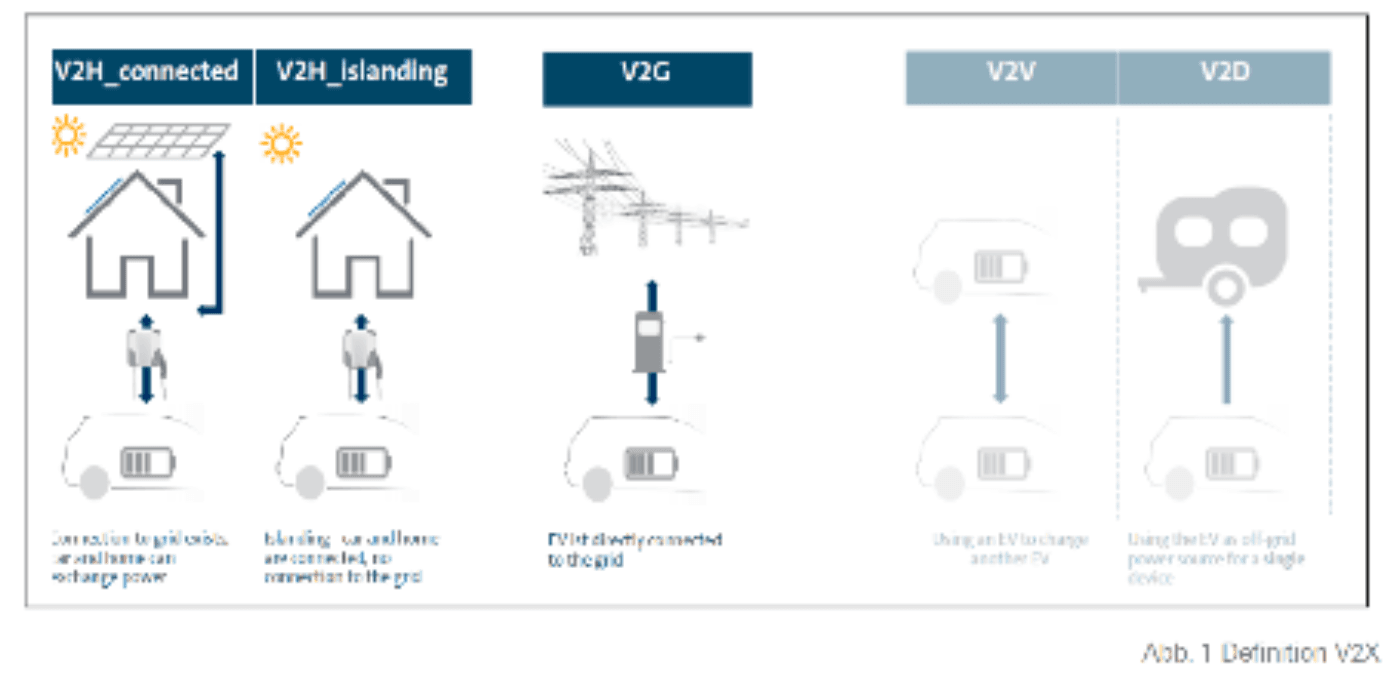
Technical innovations
The car as an everyday battery
For many years now, members of the German Association of the Automotive Industry (VDA) have been researching into recuperation from electric vehicles (EVs). They are focusing on the question of whether and how the battery in an EV could temporarily provide electricity for households and the grid.
- Topics
- Electromobility
- Technical innovations
- The car as an energy store
High potential – also for energy suppliers
The development of electric vehicles suitable for everyday use has made considerable progress in recent years. Now it is on the threshold of breaking into the mass market. A large number of different models – including the volume segment – will enter the market over the coming years. This will also concretize the impact on power grids, which have already been studied theoretically and in simulations. To control local load peaks, charging management systems will be used that will help to avoid a huge expansion of the grid.
There is basically enough temporal flexibility in charging an electric vehicle overnight, or even during the day, for the grid to provide the daily energy demand, i.e., without a high simultaneity for the vehicles. Typically, one to two hours of driving time in one day compares to 22 to 23 hours of parking time. Solutions for smart charging management are under development on both the technical and regulatory sides.
The results obtained so far from public funding programs show practical usage options for this. A sensibly designed regenerative function does not necessarily lead to an increased storage load if the discharge power does not exceed certain limits and the energy throughput is monitored.
For this purpose, storage protection functions are implemented in the vehicle or in OEM-side backend systems. The effects of the energy throughput on the high-voltage battery and any additional effort that may be required must be further evaluated and compared with empirical values from pilot projects. The use of the vehicle battery as a "mobile" storage system can bring economic advantages for the customer in various use cases and promote the wish for self-sufficiency and sustainability.
Consider economic factors
The prerequisite is that the acquisition costs of an overall system with regenerative capability (vehicle and charging infrastructure) display an attractive price-performance ratio. The discussion about the regenerative function of vehicles and the charging infrastructure is strongly influenced by politics and requires objectification. Solutions already available on the market are not always economical, but result from national or regional regulations designed to encourage and require series implementation. It is advisable to make a clear distinction between individual cases and to consider cost-effectiveness also according to specific regional aspects, since in a highly fragmented global market, direct transferability from one country to another is not always possible due to different technical and regulatory conditions.
Successful individual product launches depend on economic viability and local market requirements. The global combined charging system (CCS) technology already used in many vehicles also includes complex functions for charging control based on the ISO/IEC 15118 communication standard. The current first edition will be expanded in the upcoming ISO publication of the second edition and will then also include regenerative functions.
